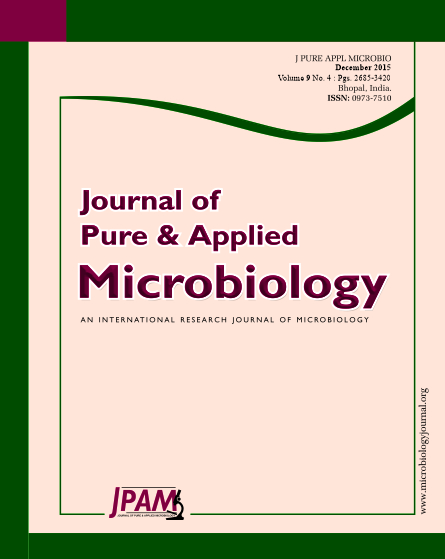An uricase producing bacteria was isolated from soil through a screening program with a medium containing uric acid as sole carbon source. On the basis of the biochemical and phenotypic data, together with molecular analysis based on 16S rDNA gene sequences, this strain identified as a novel species of the genus Pseudomonas. The optimum conditions for uricase production by this Pseudomonas isolate were determined by studying the effect of some environmental and cultural factors. Among seven variables tested in our study to optimize uricase production by Pseudomonas sp., carbon and nitrogen sources, pH and CuSO4 were selected based on their high significant effect on uricase production. The optimal combination of the major constituents of media for uricase production evaluated from the optimization algorithm of Box-Behnken was as follows: glucose, 0.1%; pH, 7; yeast extract, 0.5%; and CuSO4, 0.001g.
Uricase; Pseudomonas; Optimization; Isolation
© The Author(s) 2015. Open Access. This article is distributed under the terms of the Creative Commons Attribution 4.0 International License which permits unrestricted use, sharing, distribution, and reproduction in any medium, provided you give appropriate credit to the original author(s) and the source, provide a link to the Creative Commons license, and indicate if changes were made.


